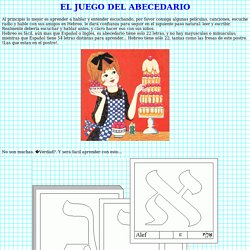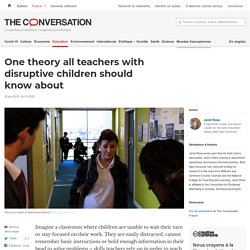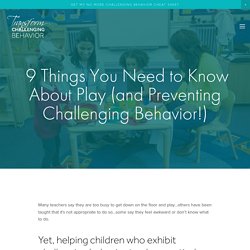

Words in English: Types of Word Formation. Words in English public website Ling 216 course information Rice University Prof.

S. Kemmer Compounding Compounding forms a word out of two or more root morphemes. The words are called compounds or compound words. In Linguistics, compounds can be either native or borrowed. Native English roots are typically free morphemes, so that means native compounds are made out of independent words that can occur by themselves. Mailman (composed of free root mail and free root man) mail carrier dog house fireplace fireplug (a regional word for 'fire hydrant') fire hydrant dry run cupcake cup holder email e-ticket pick-up truck talking-to Some compounds have a preposition as one of the component words as in the last 2 examples.
In Greek and Latin, in contrast to English, roots do not typically stand alone. Word formation gramática inglés en "English Grammar Today" - Cambridge University Press. English Grammar - Prefixes - Learn English. Free beginners’ Spanish course – DontSpeakSpanish.com. StreetWise Hebrew: Learning in the Street with Guy Sharett - StreetWise Hebrew, Learn Hebrew with Guy Sharett. Licenciatura en Enseñanza del Inglés (Modalidad Virtual) Docencia del Idioma Inglés. Licenciatura en la Docencia del Idioma Inglés. > Presentación El idioma inglés se ha convertido en los últimos años en una necesidad del mundo globalizado, y se ha considerado como uno de los idiomas más importantes en el mundo, por ello surge la necesidad creciente de formar profesionales que puedan contribuir a la formación de estudiantes con las herramientas básicas para comprender el idioma y poder comunicarse con personas de habla inglesa, comprendiendo que este lenguaje actualmente representa una herramienta que contribuye a un mejor futuro para la sociedad.

La Licenciatura en La Docencia del Idioma Inglés modalidad virtual, ofrece al estudiante el desarrollo de habilidades necesarias para promover el talento humano con liderazgo pedagógico orientado hacia la búsqueda de la mejora continua de las instituciones educativas bilingües y de servicio, aportando soluciones eficientes a los problemas educativos suscitados en la sociedad contemporánea en que labore. Juego con Abecedario Hebreo. Al principio lo mejor es aprender a hablar y entender escuchando, por favor consiga algunas películas, canciones, escuche radio y hable con sus amigos en Hebreo, le dará confianza para seguir en el siguiente paso natural: leer y escribir.

BrainFacts. Crown Academy of English – English lessons, IELTS preparation, tips and advice – English lessons and resources. Language Exchange - Learn English Chinese Mandarin Korean Japanese Spanish German French Italian Russian Arabic App. Create Comics Online. PlayPhrase.me: Endless stream of movie clips of specific phrases. Tubequizard. WordBooster: Awesome vocab worksheet maker. Story Wars. Learning Styles: Out of Fashion. There is widespread belief among educators, as well as the general public, that providing instruction based on an individual's preferred learning style improves learning.

That is, individuals with a visual learning style preference will comprehend better when they read rather than listen and, conversely, individuals with an auditory learning style preference will comprehend better when they listen rather than read. As a result of this belief, educators and professional development leaders spend time and resources assessing their students and developing instruction to specifically match each student's preferred learning style. In a critical review of the literature, Pashler, McDaniel, Rohrer, and Bjork (2008) concluded that there has been little empirical scientific research to support or negate the learning styles theory. They detailed the specific experimental design needed to investigate this theory empirically. Citations: Pashler, H., McDaniel, M., Rohrer, D., & Bjork, R. (2008).
Five essential tips for teaching very young children English. Are you daunted by the prospect of teaching English to very young children? Sheona Gilmour, lead educator on our new online course for teachers and parents, offers a few tips. Teaching English to very young children can be challenging, especially if you haven't done any training for the early years classroom.
The first time I walked into a kindergarten, I didn’t want to go back the next day. I came from a background of teaching older children, who sat at desks and whose attention I could hold more easily. So the new environment, full of young children with much shorter attention spans, felt overwhelming. Assessment for learning. Observation, Assessment and Planning - Early Years Matters. The EYFS Profile summarises and describes children’s attainment at the end of the EYFS. It is based on on-going observation and assessment in the three prime and four specific areas of learning, and the three learning characteristics, set out below: The prime areas of learning:
This ‘Kindness Curriculum’ Is Free And Should Be Used In Every Classroom. Imagine living in a world that valued kindness enough to teach it along with academics. Educators would teach kids to manage their emotions in addition to standard curriculum such as math and science. Sounds pretty amazing, doesn’t it? Well, the Center for Healthy Minds at the University of Wisconsin-Madison has created a free “kindness curriculum” for kids, designed to do just that.
It’s a mindfulness-based curriculum for preschoolers that will bring kindness into the classroom. This ‘Kindness Curriculum’ Is Free And Should Be Used In Every Classroom. The Expectation Gap. Don't Expect Toddlers To Behave Consistently — They Literally Can't. One day, when my oldest daughter was not quite 2, she wouldn’t sit still to let me change her diaper. Squirrelly and writhing, she made a game out of staying half naked. She wasn’t fussing about it or anything — in fact, she was giggling maniacally. The problem was that we were running late. Nothing I did seemed to faze her. One theory all teachers with disruptive children should know about.
Imagine a classroom where children are unable to wait their turn or stay focused on their work.

They are easily distracted, cannot remember basic instructions or hold enough information in their head to solve problems – skills teachers rely on in order to teach successfully. A 19-Year Study Reveals Kindergarten Students With These 2 Skills Are Twice as Likely to Obtain a College Degree (And They Have Nothing to Do With Reading) Don't Expect Toddlers To Behave Consistently — They Literally Can't. Can Free Play Prevent Depression and Anxiety In Kids? Public Media for Northern CA. Public Media for Northern CA. Positive Learning Environment - Primary. Key Person & Attachment - Early Years Matters. The Key Person Children thrive from a base of loving and secure relationships. This is normally provided by a child’s parents but it can also be provided by a key person.
A key person is a named member of staff with responsibilities for a small group of children who helps those children in the group feel safe and cared for. The role is an important one and an approach set out in the EYFS which is working successfully in settings and in Reception classes. How Are Happiness and Learning Connected? As teachers, we also know that when students' affective filters or defenses are sky high, fight or flight responses will be modus operandi. A room full of defensive behaviors (withdrawn, angry) is a sad, unproductive place to teach and learn.
Now let's flip it and take a look at how much more we are able to learn when we are in harmony with the people and things in any given educational environment. Teaching large classes. This article suggests ways to help discipline, to use group work and to cope with limited resources. What are the challenges of teaching a large class? How can you use group work to help learning in a large class? How can group work help in a large class when resources are lacking? How can you develop good discipline in a large class? The advantages of a large classNext steps. Classroom management for young learners. Definition of Classroom Management Classroom management refers to the ways in which student behaviour, movement and interaction during a lesson are organized and controlled by the teacher” Richards (1990, 10) .

Definition of Discipline To maintain order and to keep the group on task and moving ahead, not to spot and punish those students who are misbehaving.“( Greenwood and Parkay, 1989) The best teachers anticipate when misbehaviours are likely to occur and intervene early to prevent them. The most effective interventions are subtle, brief and almost private. Causes of deviant behaviour (Cole and Chan, 1987) Five essential tips for teaching very young children English. Surprisingly Simple Techniques for Challenging Behaviour - Kathy Brodie Early Years Training. I often get asked about children’s behaviour. It is a massive topic, with many facets. However, I would always start from the perspective that all behaviour, good or unacceptable, is a form of communication. It is how we, as practitioners and adults, respond to that communication that makes all the difference. The Webster Stratton method is a well known and widely used behaviour management strategy.
It is based on a hierarchy pyramid, with Play at the foundation, moving up through Praise, Limit setting, Ignoring and using Time out as a final resort. When working with parents, there is a focus each week on one element, and the strategies are then constructed from this information. 9 Things You Need to Know About Play (and Preventing Challenging Behavior!) — Challenging Behavior. Over and over again I’ve seen examples of intentional support for a child’s play result in language spurts, increased attention span, social skills, friendships formed, and dramatic reductions or the elimination of the challenging behavior…sometimes even when the behavior was occurring at other times of the day.

Curious? Read on… 1. Children need 45-60 consecutive minutes of play time per day. Play takes time. 5 Ways to Prevent Challenging Behavior with a "Sensory- Seeking" Child with a Short Attention Span — Challenging Behavior. Let’s think about how we can build on his interest in water and build on the fact that water play seems to self-regulate him. These ideas can be adapted for any child who moves rapidly from one activity to the next and who seems to be "sensory seeking," meaning they seek out sensory experiences such as playing with water, sand, or glue. Or, who consistently crash their trike into the wall or push into other children, seemingly for no reason. Here are some thoughts and suggestions: 1.
What to consider when teaching English in large classes. How many students do you teach? Do you feel that your classes are too big? Author and education consultant Jason Anderson looks at the issues and offers some potential solutions. For many of us, our classes are larger than we would like them to be. They can present a number of challenges that teachers of smaller classes are less likely to face. Whole Child Development Is Undervalued. The question is how to make such an approach both systemic and sustainable. Whole Person. The Art of Control. Executive function — our ability to remember and use what we know, defeat our unproductive impulses, and switch gears and adjust to new demands — is increasingly understood as a key element not just of learning but of lifelong success.
Researchers at the Center on the Developing Child at Harvard University describe executive function as an air traffic control system for the mind — helping us manage streams of information, revise plans, stay organized, filter out distractions, cope with stress, and make healthy decisions. Music and Movement Activities for Toddlers and Preschoolers. 50+ Quick & Easy Kids Crafts that ANYONE Can Make!
How to teach children English using illustrated storybooks. Ten ways to support your child’s English-learning at home. 5 Examples of Onomatopoeia. Onomatopoeia is a fun, linguistic tool used in literature, songs and advertisements. Now that you've seen examples of the individual words, consider the following examples of onomatopoeia words in use. Carol Dweck: The power of believing that you can improve.
How can parents and teachers best educate young children? Listening Skills for Staff. A longitudinal investigation of the role of quantity and quality of child-directed speech in vocabulary development. The Brain-Changing Power of Conversation. MIT Brain Study: Back-And-Forth Talk Key To Developing Kids' Verbal Skills. The Power (and Peril) of Praising Your Kids. FAQ: Raising Bilingual Children. Teaching English to learners with Special Educational Needs (SENs) – Myths and realities.
Schema and Fairies - Kathy Brodie Early Years Training. Schemas in Children’s Play. I Said I Want the Red Bowl! Responding to Toddlers' Irrational Behavior - Expert Tips & Advice . PBS Parents. Does my toddler have a short attention span because she won’t sit still for a story?
Mmunity Playthings. Play. Deconstructing Role Play – Provide the Resources, Step Back and Watch Children’s Learning Flourish. Symbolic play and language development. Choice page. The cognitive benefits of play: Effects on the learning brain. Primary school shake-up to focus on ‘play-led’ learning.
Why Movement is Essential in Early Childhood. Play to Learn: Discussion. Play to Learn. Why play-based learning? (free article) - Early Childhood Australia. Convention on the Rights of the Child. Taking Playtime Seriously.
Importance of play for babies & children. How young children learn English through play. Play. 6 Types of Play: How Children's Play Becomes More Social. Getting the right balance between adult-led and child-initiated learning. Tips on Learning to Talk. A few more myths about speakers of multiple languages. Does being bilingual make you smarter? Earlychildhood NEWS - Article Reading Center.
How can young children best learn languages? How do you speak 'Motherese'? The Woman Who Changed Her Brain: Barbara Arrowsmith-Young at TEDxToronto. Early childhood development – it’s not rocket science, it’s neuroscience! - Kathy Brodie Early Years Training.
Being Multilingual: You speak with an accent. I don’t. FAQ: Raising Bilingual Children. Deb Roy: The birth of a word. How can I help my child to start talking? (Video) Multilingual Preschoolers.